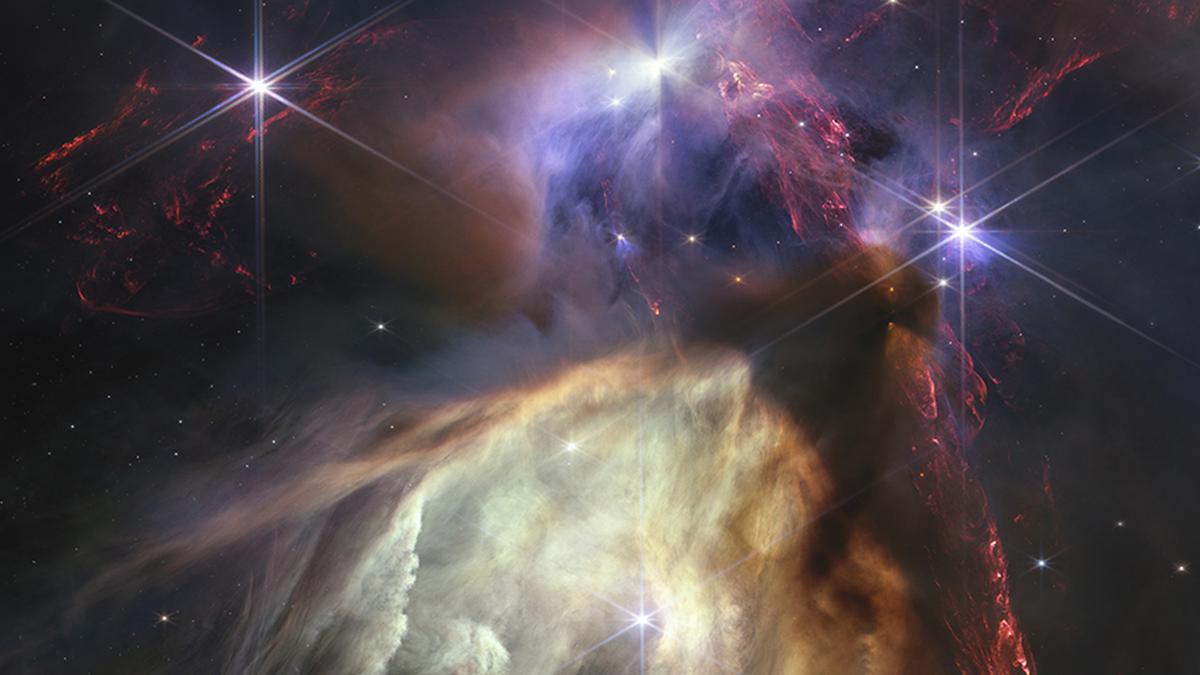August 2, 2023
Unveiling the Rho Ophiuchi Cloud Complex: Nasa’s James Webb Space Telescope

Unveiling The Rho Ophiuchi Cloud Complex: Nasa’s James Webb Space Telescope Marks A Year Of Stellar Discoveries
Source: WION (World Is One News)
Introduction:
- NASA’s James Webb Space Telescope (JWST), in collaboration with the European Space Agency (ESA) and the Canadian Space Agency, has recently celebrated one year of astonishing scientific achievements since its launch in December 2021.
- Among its many remarkable findings, the JWST captured an image of the Rho Ophiuchi Cloud Complex, a molecular cloud situated in the Ophiuchus constellation and considered the closest star-forming region to Earth.
- This milestone image offers unparalleled insights into the early stages of star formation and the birth of planetary systems.
The Enigmatic Rho Ophiuchi Cloud Complex:
- Located approximately 460 light years away from the Solar System, the Rho Ophiuchi Cloud Complex is a molecular cloud teeming with numerous young stellar objects, including protostars, young stars, and brown dwarfs.
- This captivating cloud complex comprises several dark nebulae, regions dense with interstellar dust and gas that obstruct background starlight, creating a visually stunning celestial landscape.
Revealing Observations from the JWST Image:
- The JWST image of the Rho Ophiuchi Cloud Complex has unveiled a plethora of captivating phenomena within this celestial region:
- Material Jets and Surrounding Gas/Dust: The image depicts the fascinating influence of material jets emanating from young stars on the surrounding gas and dust. As these jets interact with the molecular hydrogen, they create striking visual effects.
- Glowing Cave Carved by Stellar Winds: One particular segment of the image showcases a star situated inside a glowing cave carved by its powerful stellar winds. This mesmerizing feature emphasizes the immense forces shaping the cosmic environment.
- Impressive Nebula with Bright Young Stars: The image highlights an impressive nebula adorned with three radiant young stars at its apex, offering valuable insights into the jets and outflows that characterize early star formation.
Insights into Cosmic History:
- The JWST’s image of the Rho Ophiuchi Cloud Complex has provided astronomers with valuable data that sheds light on key aspects of cosmic history:
- Formation of New Suns: The image strikingly resembles what scientists hypothesize the early solar system looked like over 4.5 billion years ago. The visualization of planet-forming disks and nascent stars underscores the process of new suns being born.
- Violent Outbursts and Dusty Cocoons: Through the image, researchers have gained an understanding of stars and planetary systems as they form, witnessing dusty cocoons disrupted by violent outbursts—portrayed as vivid red jets cutting through the cloud.
- Penetrating the Dust: The JWST’s infrared capabilities have been instrumental in penetrating the extensive dust that typically obscures the Rho Ophiuchi core. This breakthrough allows astronomers to observe and study young stars within the cloud, revealing previously hidden details about early star formation.
The Conclusion:
- NASA’s James Webb Space Telescope has proven to be a revolutionary instrument for astronomical research, offering astonishing images and invaluable insights into the cosmos.
- The image of the Rho Ophiuchi Cloud Complex showcases the formation of new stars and planetary systems, taking us on a journey back in time to the early stages of our universe.
- As the JWST continues its mission, it holds the promise of unveiling even more profound mysteries and expanding our understanding of the universe we call home.
Daily Gist : The Hindu/Indian Express : 30 Jan 2025
January 30, 2025
Gist of editorial : the Hindu/ Indian Express/20 Jan 2025
January 20, 2025
Daily the Hindu/ Indian Express Editorial Gist: 14 Jan 2025
January 14, 2025
